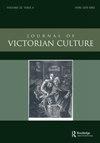The Best Developed Man in Great Britain and Ireland? Eugen Sandow and the Commercialization of Eugenics in Twentieth-Century Britain
IF 0.5
3区 历史学
Q2 HISTORY
引用次数: 1
Abstract
In 1901 Eugen Sandow, a strong man performer turned health authority, hosted a competition in the Royal Albert Hall to determine the ‘best developed man in Great Britain and Ireland’. At the contest, members of the public, the military, and the scientific community watched as Sandow and his judges compared men’s physiques. Typically depicted by historians as a pivotal step in the development of bodybuilding as a sport, this article repositions Sandow’s contest as a public manifestation of British eugenics and concerns about physical deterioration. Welcoming a thousand competitors in its qualifying rounds, Sandow’s contest was advertised with reference to perfecting the British male body and stemming the tide of British degeneration. When the outbreak of the Second South African War in 1899 delayed the contest’s finale, Sandow’s marketers redoubled efforts to depict the contest as an antidote to the physical deterioration of British troops said to have become evident in the conflict. Here it is argued that Sandow simultaneously magnified, and profited, from a broader British eugenic concern about the male body. His competition served as a strong reminder for how widespread such concerns were in late Victorian and early Edwardian Britain and, more importantly, how they could be commercialized.英国和爱尔兰最发达的人?尤根·桑多与20世纪英国优生学的商业化
1901年,由强壮的表演者转变为卫生当局的尤根·桑多在皇家阿尔伯特音乐厅举办了一场比赛,以确定“大不列颠及爱尔兰发展最快的人”。在比赛中,公众、军队和科学界的成员观看了Sandow和他的评委们对男性体质的比较。这篇文章通常被历史学家描述为健美运动发展的关键一步,它将桑多的比赛重新定位为英国优生学和对身体退化的担忧的公开表现。Sandow的比赛在资格赛中迎来了1000名参赛者,广告中提到要完善英国男性的身体,遏制英国的堕落浪潮。1899年第二次南非战争的爆发推迟了比赛的最后阶段,Sandow的营销人员加倍努力,将比赛描述为英国军队身体状况恶化的解药,据说英国军队在冲突中表现得很明显。在这里,有人认为Sandow同时放大了英国人对男性身体更广泛的优生学关注,并从中获利。他的比赛有力地提醒人们,这种担忧在维多利亚晚期和爱德华七世早期的英国是多么普遍,更重要的是,它们是如何商业化的。
本文章由计算机程序翻译,如有差异,请以英文原文为准。
求助全文
约1分钟内获得全文
求助全文

 求助内容:
求助内容: 应助结果提醒方式:
应助结果提醒方式:


